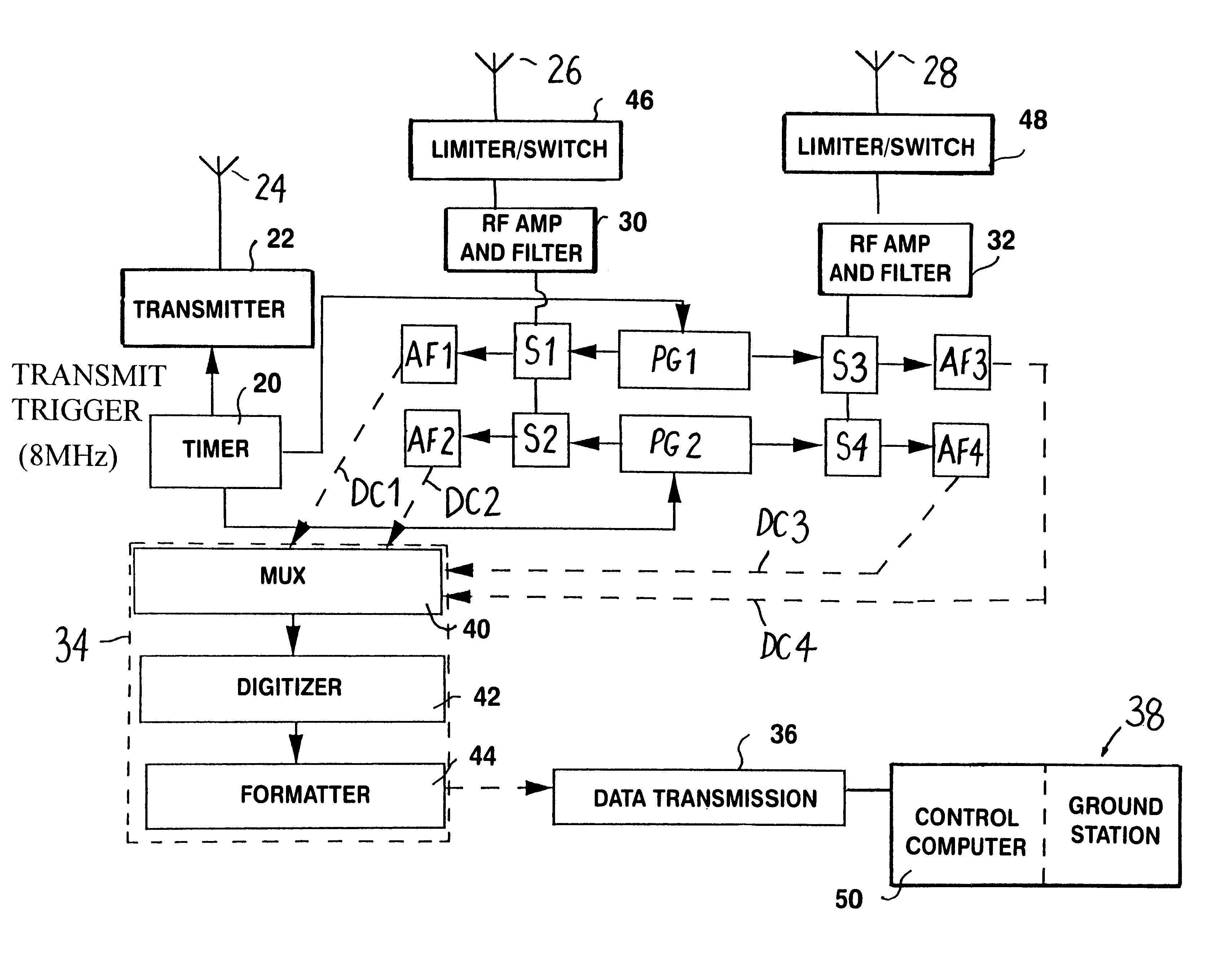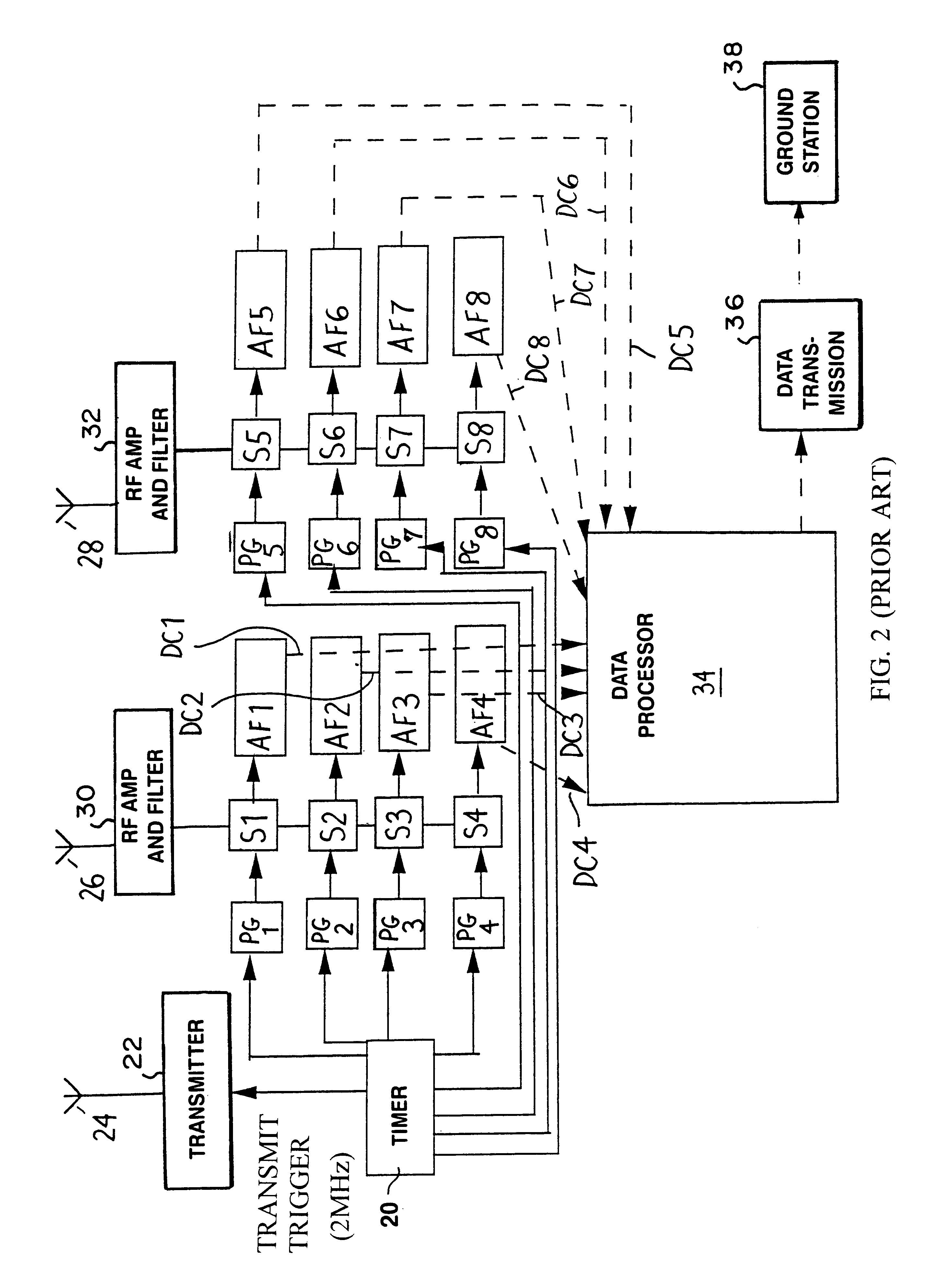Apparatus for and method of determining positional information for an object
a technology of position information and apparatus, applied in the direction of reradiation/reflection, radio wave reradiation/reflection, measurement devices, etc., can solve the problems of uncontrollable differential delay between corresponding range gates with respect to different antennas, inability to detect samplers, and relatively complex timing modules
- Summary
- Abstract
- Description
- Claims
- Application Information
AI Technical Summary
Problems solved by technology
Method used
Image
Examples
Embodiment Construction
Overall Configuration for the Present Invention
Referring first to FIG. 4, three receivers 100, 102 and 104, are disposed at the vertices of a triangle but this is not fundamental so long as however many receivers are provided are at known locations. For simplicity, FIG. 4 shows just two range gates at the same delay with respect to the two receivers 100 and 102 (one gate per receiver); it should be noted that the range gates are not to scale. As is clear, the angle .theta. between the position at which the target (possibly a missile) crosses the range gate and the line joining the two receivers is a function of the distance between the range gates, which in turn is directly proportional to the different delay, .delta.t; the distance is a maximum when .theta. is 0 or 180.degree. and a minimum (zero) when .theta. is 90 or 270.degree.. In three dimensional terms a given angle .theta. would be representative of a target placed on a hyperboloid focused at the two receivers.
It is desirabl...
PUM
 Login to View More
Login to View More Abstract
Description
Claims
Application Information
 Login to View More
Login to View More - R&D
- Intellectual Property
- Life Sciences
- Materials
- Tech Scout
- Unparalleled Data Quality
- Higher Quality Content
- 60% Fewer Hallucinations
Browse by: Latest US Patents, China's latest patents, Technical Efficacy Thesaurus, Application Domain, Technology Topic, Popular Technical Reports.
© 2025 PatSnap. All rights reserved.Legal|Privacy policy|Modern Slavery Act Transparency Statement|Sitemap|About US| Contact US: help@patsnap.com



